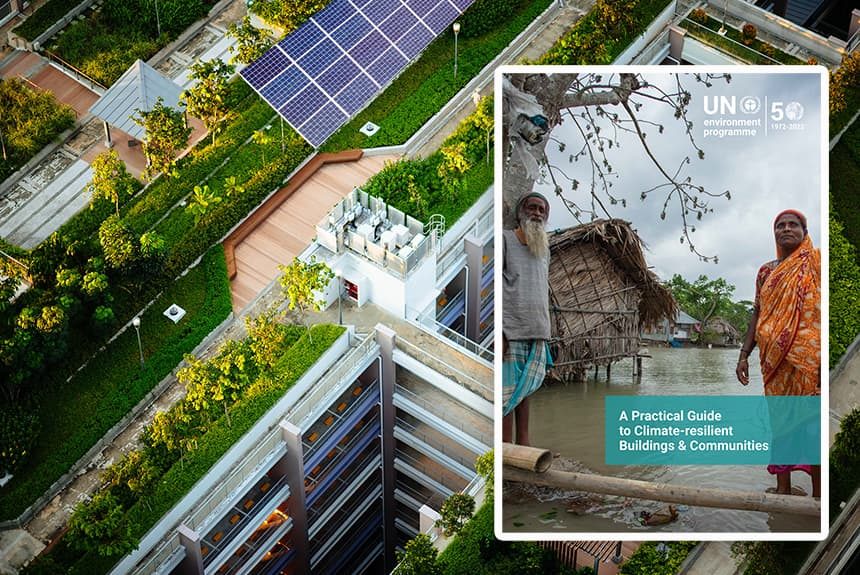When Tropical Cyclone Idai, one of the strongest cyclones to strike Africa, and Tropical Cyclone Kenneth lashed Mozambique in 2019, it devastated infrastructure, homes, workplaces, and schools through the severe winds and flooding it brought.
The extent of losses and damage suffered by communities from extreme natural disasters highlights the importance of resilient infrastructure and buildings that can withstand the increasing risks of climate change and natural hazards.
The United Nations Environment Programme (UNEP) publication, “A Practical Guide to Climate-Resilient Buildings and Communities,” demonstrates how buildings and community spaces can be constructed to increase their resilience to climate change, especially in developing countries where structures are often built by local communities.
The publication provides an overview of the fundamental types of interventions at the building scale, including nature-based solutions.
Read some excerpts from the UNEP’s practical guide:
- This practical guide has been prepared because the United Nations Environment Programme (UNEP) recognises the key role buildings can play in enhancing climate change adaptation, improving resilience and addressing and mitigating risk. Furthermore, there is a recognised need for additional resources addressing good practice for buildings in communities and towns that face risk from disasters but may suffer from a deficit of professionally trained architects, engineers, contractors, manufacturers and other practitioners. Therefore, this note is written for a broad audience, including those with little experience in the building and construction industries.
- The term “built environment” encompasses all areas of development, including infrastructure (roads, utilities, and major transportation hubs), as well as buildings, parks, and other urban features. While this note provides an overview of critical infrastructure and community-scale considerations, it is primarily focused on building structures and their immediate surroundings.
- The practical guide sets out to provide an overview of the fundamental types of interventions at the building scale. It offers explicit concepts and approaches for the building envelope, roof, structure, orientation and materials. The methods and technologies presented in this document are tailored toward a developing country context and a built environment that is largely self-constructed. However, the majority of the techniques identified in this practical guide can be scaled up and applied to buildings of any type, including apartment complexes, hospitals, and schools.
The guide explores various solutions applicable to a broad geographic scope and diverse climate types. These interventions are scalable and focus on technical approaches, particularly in areas experiencing rapid population and urbanisation.
The note offers various building and construction designs for single-family homes, as well as large commercial buildings, to help accommodate diverse climates ranging from hot and arid to hot and humid, and from cold to temperate.
To read the UNEP report, click the link below:
Source Citation:
United Nations Environment Programme (2021). A Practical Guide to Climate-Resilient Buildings & Communities. Nairobi. Retrieved from https://wedocs.unep.org/xmlui/bitstream/handle/20.500.11822/36405/Adapbuild.pdf



Leave a Reply